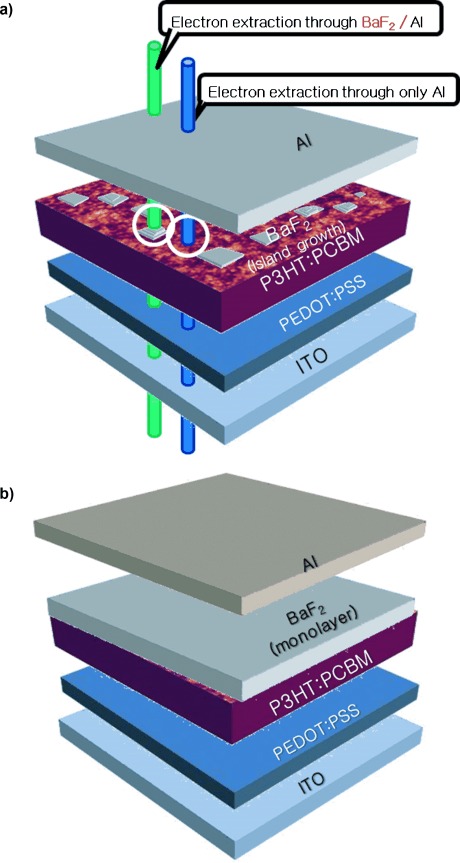Role of Ultrathin Metal Fluoride Layer in Organic Photovoltaic Cells: Mechanism of Efficiency and Lifetime Enhancement
슈퍼관리자
2021-05-21
Role of Ultrathin Metal Fluoride Layer in Organic Photovoltaic Cells: Mechanism of Efficiency and Lifetime Enhancement
-
Authors :
KG Lim, MR Choi, JH Kim, D Kim, GH Jung, Y Park, JL Lee, TW Lee
-
Journal :
ChemSusChem
-
Vol :
7
-
Page :
1125
-
Year :
2014

Abstract
Although rapid progress has been made recently in bulk heterojunction organic solar cells, systematic studies on an ultrathin interfacial layer at the electron extraction contact have not been conducted in detail, which is important to improve both the device efficiency and the lifetime. We find that an ultrathin BaF2 layer at the electron extraction contact strongly influences the open-circuit voltage (Voc) as the nanomorphology evolves with increasing BaF2 thickness. A vacuum-deposited ultrathin BaF2 layer grows by island growth, so BaF2 layers with a nominal thickness less than that of single-coverage layer (≈3 nm) partially cover the polymeric photoactive layer. As the nominal thickness of the BaF2 layer increased to that of a single-coverage layer, the Voc and power conversion efficiency (PCE) of the organic photovoltaic cells (OPVs) increased but the short-circuit current remained almost constant. The fill factor and the PCE decreased abruptly as the thickness of the BaF2 layer exceeded that of a single-coverage layer, which was ascribed to the insulating nature of BaF2. We find the major cause of the increased Voc observed in these devices is the lowered work function of the cathode caused by the reaction and release of Ba from thin BaF2 films upon deposition of Al. The OPV device with the BaF2 layer showed a slightly improved maximum PCE (4.0 %) and a greatly (approximately nine times) increased device half-life under continuous simulated solar irradiation at 100 mW cm−2 as compared with the OPV without an interfacial layer (PCE=2.1 %). We found that the photodegradation of the photoactive layer was not a major cause of the OPV degradation. The hugely improved lifetime with cathode interface modification suggests a significant role of the cathode interfacial layer that can help to prolong device lifetimes.















